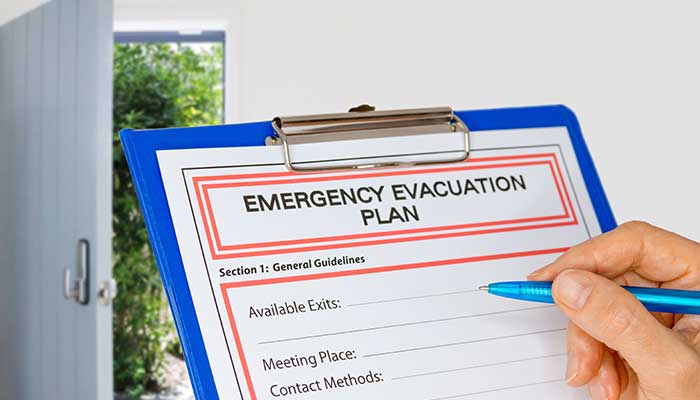Employers are expected to safeguard the safety of personnel within their office premises, this includes employees,  contractors, customers, or even random visitors. Contingencies for emergency situations like fires, floods, hurricanes, chemical spills, explosions, civil disturbances or earthquake are when such safety measures come handy in saving the lives of people within the premises. Since such mishaps can never be predicted, and it’s essential to be prepared with an evacuation plan to minimize collateral damage.
contractors, customers, or even random visitors. Contingencies for emergency situations like fires, floods, hurricanes, chemical spills, explosions, civil disturbances or earthquake are when such safety measures come handy in saving the lives of people within the premises. Since such mishaps can never be predicted, and it’s essential to be prepared with an evacuation plan to minimize collateral damage.
This is especially true for the chemical, manufacturing and other high-tech facilities where proper security measures and emergency evacuation plans are paramount in times of contingency. As a general rule, it is not just the employers but also the employees who are expected to know and follow certain OSHA standards. How a plan is prepared and laid down can help in determining whether its outcome will result in fewer losses or severe damages.
Getting started with preparation
An Emergency Action Plan (EAP) includes several activities like:
- Identifying emergency evacuation plans and emergency escape routes
- Determining procedures that will be followed by employees staying back for a while to operate critical tasks before evacuating
- Assigning rescue duties to certain people who will lead the evacuation, in order to avoid creating a chaotic situation
- Identifying means of incident reporting, such as possible causes of fire, earthquake intensity, or more
- Creating a list of people with their job titles who can be contacted in case of an emergency situation
- Ensuring availability of fire extinguishers in close proximity (which could be dry powder or foam type extinguishers), which are also maintained well, and are not kept anywhere near to heat sources
Implementing an EAP
Emergency evacuation plans, no matter how effective or efficient they are, are bound to fail if those who are associated have not been trained to implement them. This is why it is necessary to train all the employees on how they should react to different emergency situations. The equipment and the guidelines must also be evaluated after regular intervals to determine their effectiveness and application for long-term use. The benefits associated with having a plan in place, along with coordinators to execute them are:
- Having a coordinator who can lead and coordinate with the emergency evacuation plan. This is also a common practice that is followed by a number of large organizations. It is equally vital for everyone else to know the point of contact who can direct or lead them during a crisis situation.
- Employee training regarding evacuating a premises or dealing with a situation holds equal importance. For instance, the first course of action would be evacuating using the closest evacuation point. Those who cannot evacuate must go to the closest window and try to listen to the radio or make a call to get further instructions for evacuation. Such training also involves instructions on how to deal with hazardous materials as and when a situation arises.
- Plan Review helps a firm keep its employees up-to-date with the latest security guidelines, while also assessing the health of security measures and equipment. Holding regular drills with the same is also a good practice, which is often employed by many leading organizations worldwide.
For more on best practices and ideas for all workplace emergencies, join expert speaker Ryan Davison, Ph.D. in a live webinar, titled ‘How to Plan for Workplace Emergencies and Evacuations’ on Thursday, February 16, 2017.




